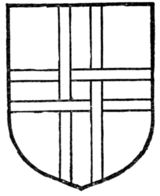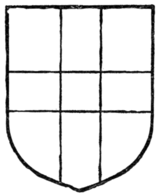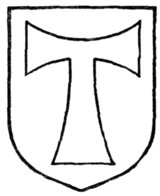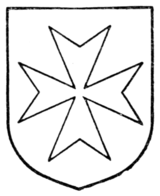130
A COMPLETE GUIDE TO HERALDRY
Whenever a cross or cross crosslet has the bottom arm elongated and pointed it is said to be "fitched" (Figs. 180 and 181), but when a point is added at the foot e.g. of a cross patée, it is then termed "fitchée at the foot" (Fig. 182).
Of the hundreds of other varieties it may confidently be said that a large proportion originated in misunderstandings of the crude drawings of early armorists, added to the varying and alternating descriptions applied at a more pliable and fluent period of heraldic blazon. A striking illustration of this will be found in the cross botonny, which is now, and has been for a long time past, regularised with us as a distinct variety of









